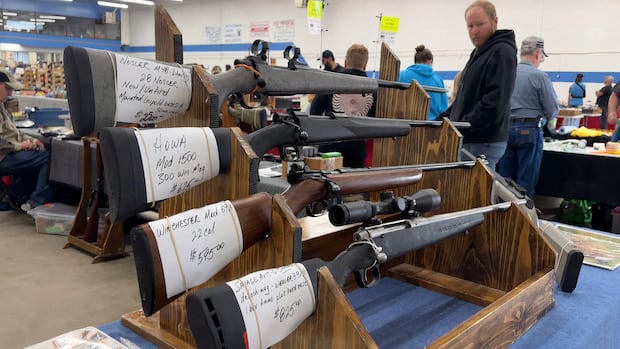In rural Alberta, federal gun rules seen as 'gong show' as byelection approaches
In one of Canada's most conservative ridings, there's vocal frustration over delays tied to buyback program
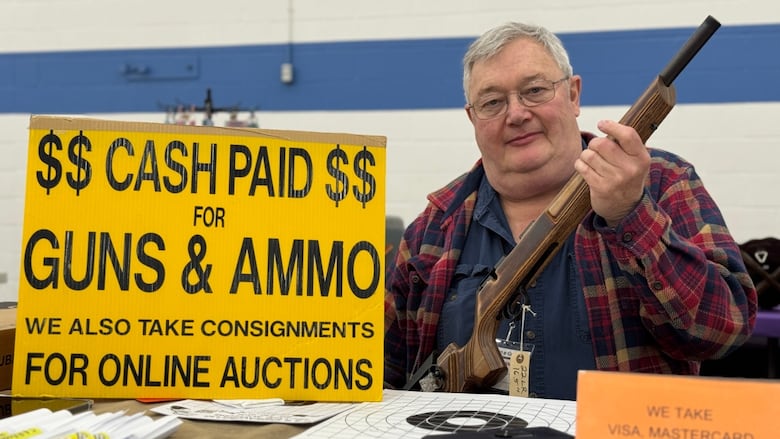
"Come on, you old fart."
Dave Collins opens a gate and lets his 13-year-old yellow lab Tucker plod into his front yard.
Collins and Tucker are tied at the hip, living in the "big city" of Morrin, Alta., population a little more than 200.
Morrin sits in the rural riding of Battle River-Crowfoot, a longtime conservative stronghold where Conservative Leader Pierre Poilievre is running against more than 200 candidates in a byelection set for Aug. 18.
Among the issues for voters in the region are the federal government's gun policies, with its controversial buyback program chief among gun owners' concerns.
"It's a gong show," is how Collins characterizes the whole thing.
Collins is a decades-long gun enthusiast who makes his own ammunition, and the scale of that hobby becomes quickly apparent after descending the steps to his basement.
"I keep adding to it, and adding to it," he says, gesturing to shelves lined with presses, dies, and priming tools. "It's an accumulation of 40 years of stuff."
For Collins, reloading and shooting old rifles is a way to hang on to a bit of history. It gets him outdoors and has connected him to others with the same passion.
"I met a bunch of good people," he says.
Today, Collins is wearing a beige and brown camouflage baseball cap, a grey T-shirt and khaki cargo shorts. Sometimes, when he talks, he tugs at his long, thick white beard, which extends several inches below his chin.
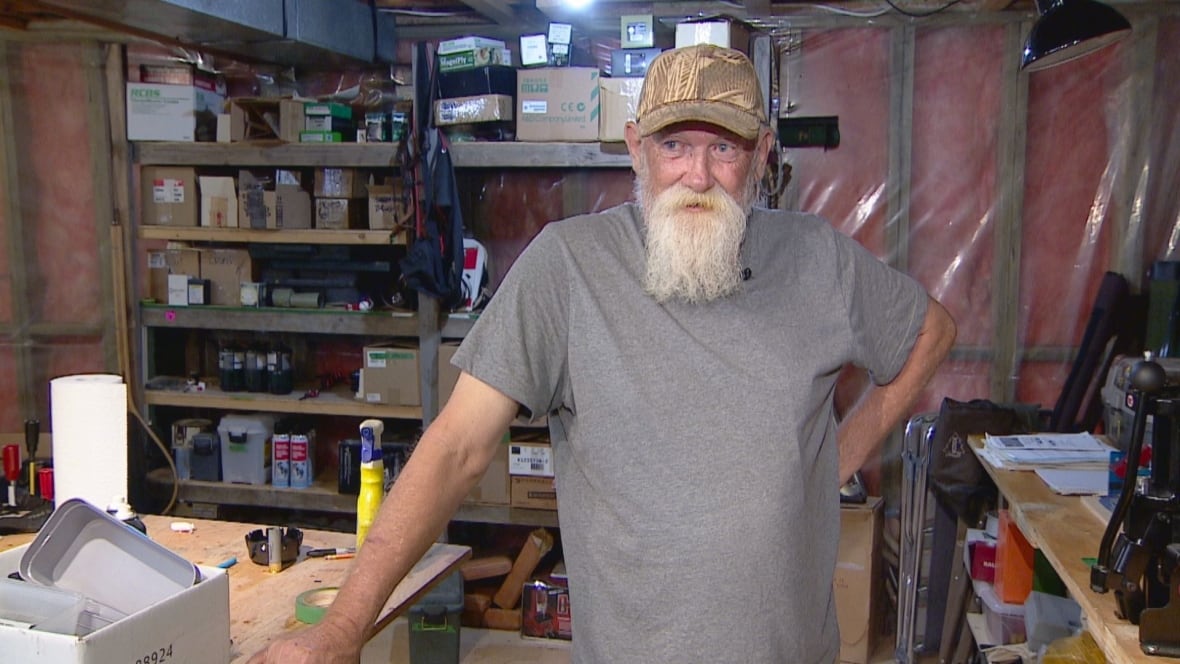
Down in one corner of his basement, Collins opens a large Yukon Gear safe and pulls out one of his favourite firearms.
"This one's my main goose hunting gun," he says, holding up a 12-gauge Fabarm Classis shotgun.
It's no surprise that Collins, like many firearms owners in this riding, is no fan of federal gun policy. People from outside the region don't always grasp the realities of living in rural Alberta, he suggests.
"Until you get around and start circulating around the countryside, you don't really develop a picture of that stuff," he said. "Here's the rest of the world, folks."
WATCH | Gun regulations on rural Alberta voters' minds ahead of high-profile byelection:
A ban, then a delayed buyback
In 2020, Ottawa banned more than 1,500 models of "assault‑style" firearms, later expanding the list to more than 2,000 models.
Gun control advocates view measures like these as important steps toward removing military-style weapons from circulation. They argue that Canadians have voted to ban these types of guns four elections in a row.
"It's been a long wait," Coalition for Gun Control president Wendy Cukier said in 2020, adding that she was counting on parliamentarians to support a mandatory buyback program and keep the ban permanent.
Since then, proponents of stricter gun laws, such as the group PolySeSouvient, feel federal policy has made significant progress. But they say it remains incomplete, with several promised measures still unfulfilled.
Many in Battle River–Crowfoot, however, disagree with Ottawa's approach. They feel the rollout has unfairly targeted lawful gun owners instead of focusing on people unlikely to follow the law in the first place.
"We're mostly disgusted. That's pretty much the easiest way to put it," Collins says of the reaction among gun owners.

As part of the strategy, the government promised a buyback program for businesses and individuals in possession of prohibited firearms. But that program has been delayed for years.
The first phase, buying back from businesses, began late last year. More than 12,000 guns have been bought back as of April 30, according to Public Safety Canada.
Individual owners, however, are still waiting. The official government website notes that the program for individuals is "not yet available" and is expected to begin later in 2025.
That limbo is causing anger and anxiety, especially among those who now have thousands of dollars tied up in now-prohibited firearms.
In an email to CBC News, the Canadian Sporting Arms and Ammunition Association (CSAAA) cited two popular firearms as examples of what's been banned: the Weatherby Mark V 460, priced around $4,000, and the Ruger No. 1, at $2,200.
The RCMP wrote in an email to CBC News that both the Weatherby Mark V and the Ruger No. 1 are available in several calibres, some of which are non-restricted and others that are prohibited.
Poilievre has said he would get rid of the previous government's "assault-style" firearm buyback program, branding it as a "gun grab."
At a candidates' forum in Camrose, Alta., on July 29, the Conservative leader said his goal in running in the riding was to give "national leadership to the issues that are of local importance," listing reversing the EV mandate, prison reform, and firearms policy as among those issues.
"Your right to protect and keep your firearms. That is a local issue if you're a hunter in Empress, or Trochu, or Consort," he said, naming a few of the small communities in the riding.
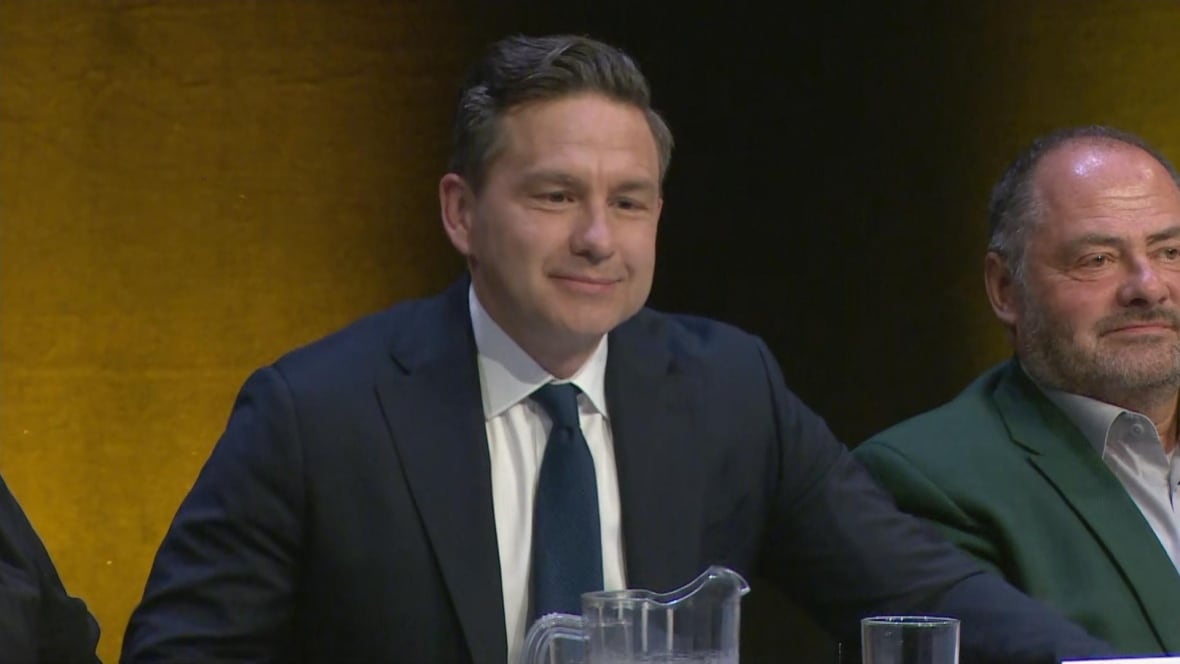
During the last federal election, Prime Minister Mark Carney committed to keeping "assault-style" weapons off the streets, while "respecting the longstanding traditions of hunting and sport shooting in Canada," committing to "reinvigorate the implementation of an efficient gun-buyback program for assault-style firearms."
For their part, PolySeSouvient said gun control advocates, including survivors of mass shootings, are also frustrated with "the slow pace and extended amnesties related to the buyback program."
"However, implementation challenges in no way diminish the importance and urgency of removing civilian-owned military-style weapons from circulation," the group wrote in an email to CBC News.
"The prohibited weapons are designed to maximize lethality as well as the death toll. As long as these remain in circulation, they represent a disproportionate and unacceptable public safety risk."
Compensation questions
Driving into the town of Hanna, Alta., last month, one was likely to take note of two pieces of information: signs proudly declaring the community the home of Canadian rock band Nickelback, and multiple markers with an arrow and a simple message pointing toward a popular local event: "Gun show."
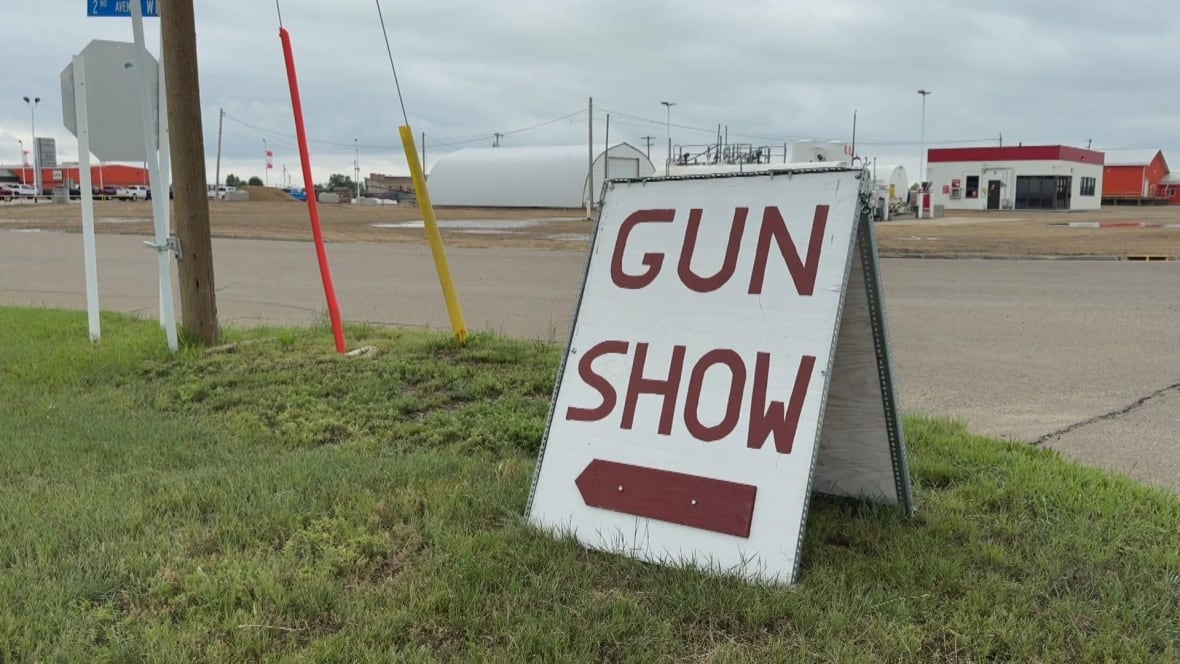
Inside the Hanna curling rink, where the show was taking place on July 20, visitors wandered among rows of rifles, knives and hunting gear. Vendors showcased everything from vintage firearms to waterfowl decoys.
Hunting is a popular activity in many parts of the province. As of March 31, 2025, there were 374,229 valid possession and acquisition licences issued in Alberta, according to the provincial government.
"Lots of big collectors. Lots of them are hunters. They hunt every day," said Andre Reed, president of the Hanna Rod and Gun Club, surveying the crowd at the show.
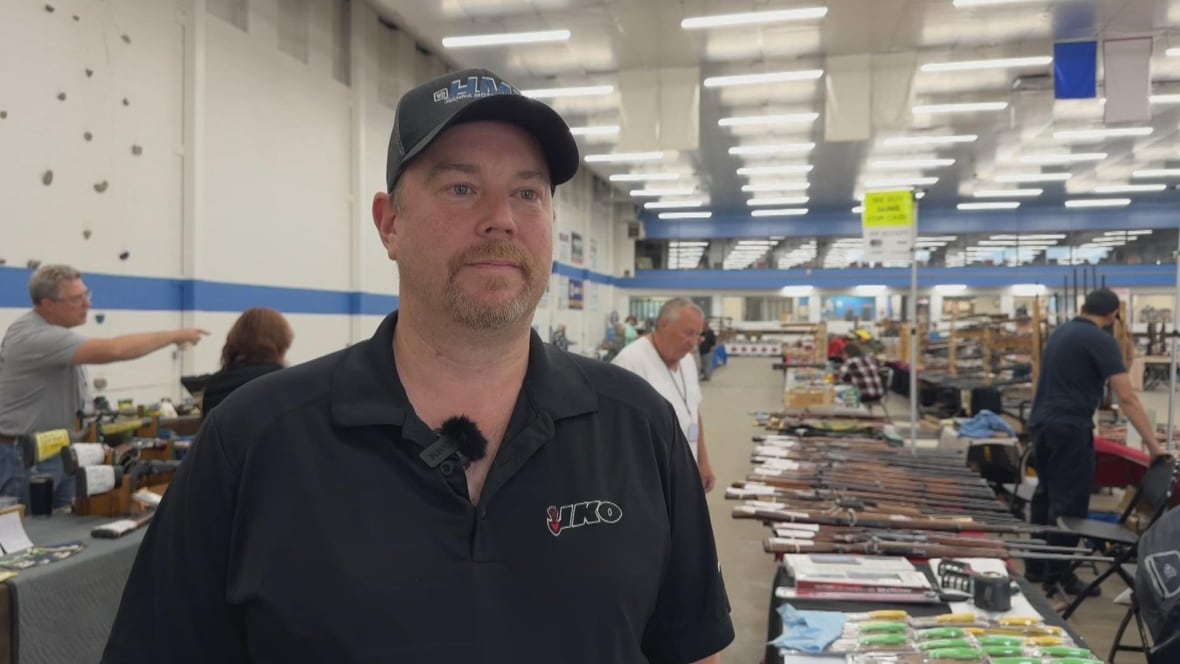
In Reed's view, the buyback program has been both delayed and disorganized. On top of that, he says, firearm owners are nervous about whether they'll get a fair return on the guns they must surrender.
"There's thousands of dollars in some of these things," he said.
The CSAAA echoed those concerns. In a statement, the association said pricing offered to businesses in the "confiscation program" has generally been "accurate and fair based on market value."
"While we haven't seen a reason to believe individuals will be unfairly compensated, the lack of transparency is causing concern within the community," the statement reads.
In its statement, a spokesperson with Public Safety Canada said all licensees will be contacted when the program begins.
"Preparation for extending the compensation program to individual firearms owners is well underway, as the government builds on the success of the work done with firearm businesses and tests the web portal and systems for individuals to submit claims," reads the statement.
Compensation for individual firearms owners will involve "in-depth pricing research and analysis, including reviewing manufacturer prices, Canadian dealer and retailer prices, foreign retailer prices, pricing guidebooks and auction listings," according to Public Safety Canada.
"The compensation amounts will reflect market values," the statement reads.
A smaller show than usual
This year's event was the club's 45th annual gun show, but turnout was lower than normal. Some vendors expressed frustration with the decline.
"This is my third year here in Hanna. It's the slowest year. Every year, it's gonna go slower and slower and slower and slower," said Yasir Saeed, a vendor at the show. "People are getting scared of buying guns."
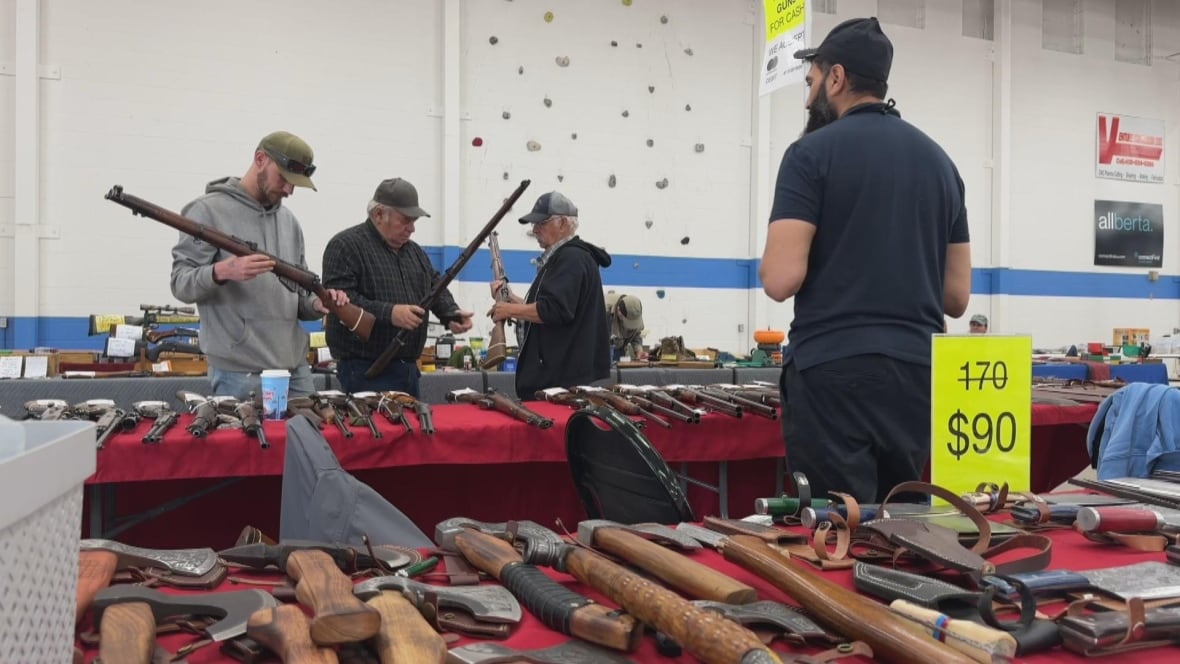
Marj Veno, a lifelong resident of Battle River-Crowfoot who was browsing the tables, has lived on the same property for 45 years.
"I use firearms on a regular basis to hunt coyotes, hunt gophers, hunt badgers, and very rarely do I go hunting deer. And when I do, with my grandsons," she said. "Guns are treated with respect and my family's all been taught how to handle guns properly.
"That's just the value that carries on through generations in this country."
Veno said firearms policy was a "very important" consideration to her as a voter.
"It makes no sense in our part of the world," she said.
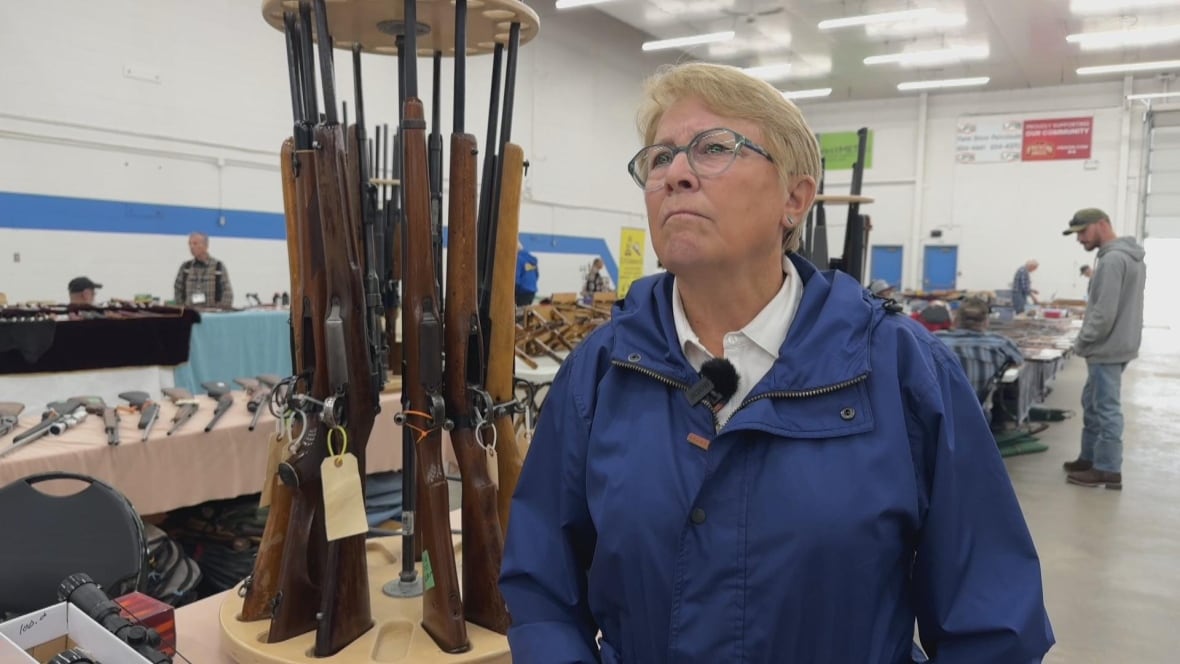
Aaron Friedley, another attendee, said guns have always been part of farm life for him, but he views them as tools for pest control and survival.
He's aware of the debate around federal policy. But for him, the rules have never seemed like much of a hindrance.
"It's the people that want to have fully automatic stuff that should really only be used in military that are complaining are being restricted on a farm," he said.
"What the hell are you ever going to use this for? Except for picking a fight for somebody and trying to win. I don't have that jam."

'So. Whaddya do?'
Southwest of Hanna lies the town of Drumheller, Alta., a tourist hub known for its dinosaur museum and dramatic badlands.
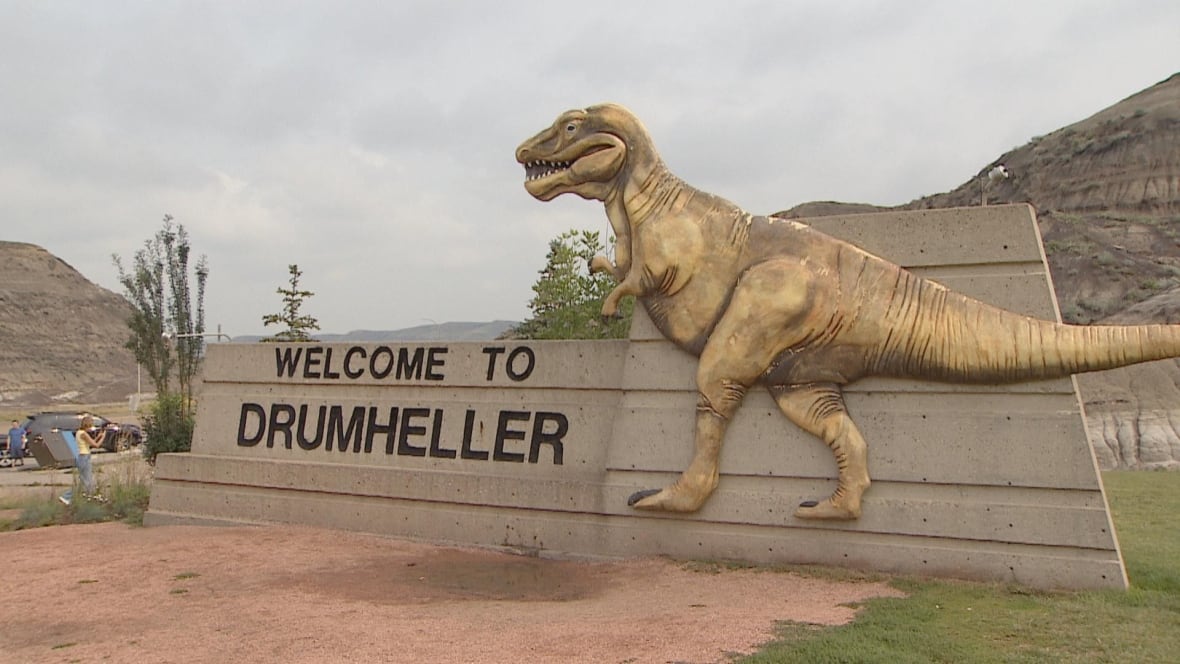
But debate around firearms policy is also on the minds of residents of the "Dinosaur Capital of the World." Here, hunting is a part of everyday life.
Teresa White has lived in Drumheller since the mid-1990s, after moving to the area with her husband, an accountant. While she and her husband aren't hunters, their son is.
"A lot of his friends are hunters," she said, noting that hunting is common because "there's so many hills and stuff. Lots of places to hunt."
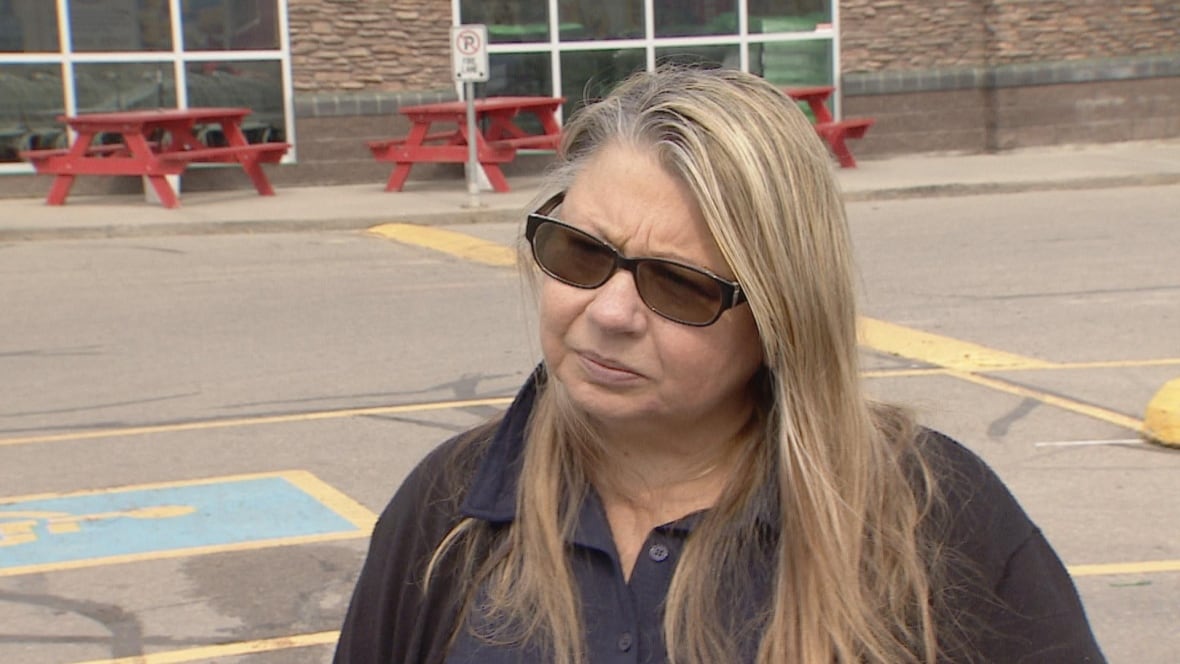
Gerald Stubert, meanwhile, has lived in the Drumheller region for more than 40 years. He expressed a sentiment common among many living in the riding.
"City folk, they aren't hunters. They don't understand the concept of going out and gathering your own meat, per se," he said, standing in the parking lot of the local Canadian Tire.
As to how big of an issue he expects gun policy to be in the upcoming election?
"Oh, it'll be big. Yeah, it will be big," he said.
"The rural communities, I know lots of people. They aren't in favour of it at all."

Back in Morrin, a short drive north of Drumheller, Collins is in his basement tinkering at the reloading bench. This is where he feeds spent brass cases into his press to reshape them.
He recognizes that his pastime, and the views of many in this rural portion of a largely conservative province, will likely come off as foreign to people living elsewhere in the country.
It's kind of like how Vancouver and Victoria dominate B.C. politics, in Collins' view. People outside the Lower Mainland often feel like those cities are out of touch, he says.
"They're going, 'These guys are nuts!'" Collins said.
It's the same kind of divide you see between Western and Eastern Canada during elections, he added.
"So. Whaddya do?"

